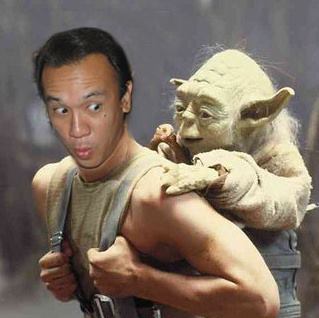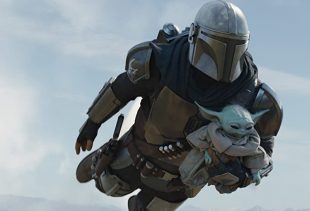The Mandalorian saved Star Wars, and it’s really that plain and simple. The series is not home to the best writing or direction, but that doesn’t matter, because it’s one million percent better than Star Wars: Episodes 8 &9. The fans are happy, I’m happy, and that’s what really counts in the end.
LIGHTS, CAMERA – DIRECTION!
The Mandalorian spans two seasons that are eight episodes long. Like most television shows, there’s a long list of different personalities who have the honor of sitting in the director’s seat. In the case of the Mandalorian, there were nine, many of who are rather notable. There’s Robert Rodriguez, who directed Alita: Battle Angel. Peyton Reed, who directed all of the Ant-Man movies. Then there’s Taika Waititi, who directed Thor: Ragnarok. Then you have Dave Filoni, a writer on the Star Wars: Clone Wars, Rebels, and Resistance, cartoons, not to mention a director for the animated hit, Avatar: The Last Airbender. And, of course, we can’t forget Jon Favreau, who most notably directed Iron Man 1 and 2. I still remember him from Friends as Pete Becker.
So we’re talking quality, big-time quality directors who were brought on not to screw this franchise up.
They all did a great job.
Nothing extraordinary, which is actually a feat within itself to admire.
You don’t want to do anything extraordinary as a director. This may surprise you, but as a director, the ultimate goal is to go unnoticed. If an audience comes out of a theater saying, “Wow, that was a great movie!” a director has won. If an audience says, “That’s great directing!” the director has actually failed.
These directors put their egos, agendas, and personal style aside. What was most important to them, was the story of the Mandalorian, the characters, and the steps they would follow to save the Star Wars Franchise. None of these directors pulled a Rian Johnson or a Kathleen Kennedy.
GRADE: A
THE SCRIPT – IT’S ALL ABOUT STORY
The Mandalorian’s writing is not great, it’s good, and it’s far from bad. When it comes to the Star Wars Franchise, the screenwriting in Episodes 8 and 9 was some of the worst I’ve seen in my life.
George Lucas worked with Jon Favreau to create the Mandalorian, and part of their focus was to fix the Star Wars Franchise through this character. From here, the Mandalorian will be used to jumpstart Luke Skywalker’s life after The Return of the Jedi, and bring to life much of the canon that was established in the cartoons and books. Kathleen Kennedy wiped that out in one swipe.
The Mandalorian episodes were rather simple. He was just another version of The Transporter. And The Transporter was just another version of your simple story arc where your bounty hunter, killer, or mercenary, who is bound by loyalties or codes, protects their mark instead of doing their job, because they suddenly grow conscious. And then, from there, everything is a chase scene – in the case of the Mandalorian, a VERY VERY SLOW CHASE SCENE.
If I had one wish, I truly wished that more story would be shoved into each episode. The episodes were a bit too slow for me, that’s my only criticism. Even the music was slow.
Did you watch the old 1994 Spider-Man Cartoons? If not, you should. That is some of the best writing I’ve seen. The 1994 Spider-Man series consisted of 65 thirty-minute episodes, and the writer, John Semper, pushed so much story into each 30-minute episode, it was incredible. A big part of me wishes they would have brought in John Semper to pen the Mandalorian. I’m just a big fan of all his work.
Nevertheless, the Mandalorian was written well enough to keep fans happy, fix the franchise, and accomplish that job. For that, they get the highest grade.
GRADE: A
CHARACTER BREAKDOWN
Make no mistake; The Mandalorian was created to save the Star Wars franchise. It just wasn’t made to create a cool Star Wars show for Disney Plus. George Lucas and Jon Favreau sat down and figured out how to save Star Wars and which character to do it with.
THE MANDALORIAN: TYPE SIX “Loyalist”
The Mandalorian is your typical loyalist personality. They fear themselves, don’t trust themselves, so in the end, they join a group (aka – a gang) that will tell them how to live, because they are more likely to trust a group than their own instinct. The Mandalorian’s code operates very much like a religious cult, because let’s face it, it is one. Obey, listen, don’t think for yourself, don’t remove your helmet, or you’re not in club Mando. Growth comes to The Mandalorian, where he starts pulling away from the Mandalorian cult, and Grogu, aka baby Yoda, is the reason why he grows.
AS FOR THE REST OF THE CAST…
There’s really not enough information on them to really slap a personality type on them at this time. Jon Favreau and George Lucas probably have an idea, but they’re just really not sharing that with the audience at the time. Right now, we have a list of characters that all have different agendas that sidetrack the Mandalorian. Each side-mission helps the Mandalorian grow, and that keeps everything a bit interesting.
If the Mandalorian feels as though it’s dragging a bit sometimes, it’s because many of these other characters have not been developed to the point where they are interesting enough for the audience to care about.
OVERALL IMPRESSION
The Mandalorian episodes are slow-burn, old school, traditional stories that pay off in the end. That’s not exactly a bad thing, but it’s definitely not an exciting thing, haha. I have to say, though, the entire creative team did a good job.
GRADE: A



